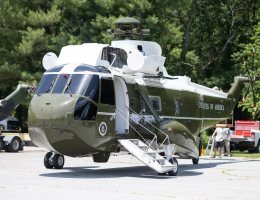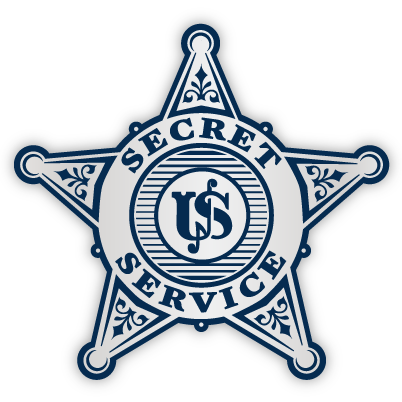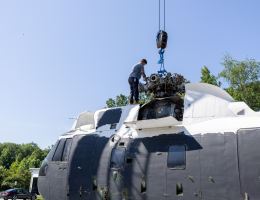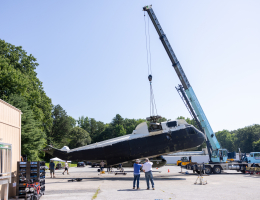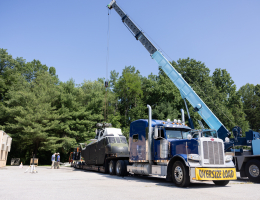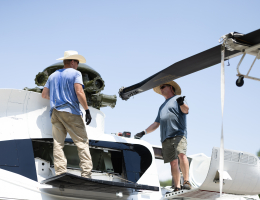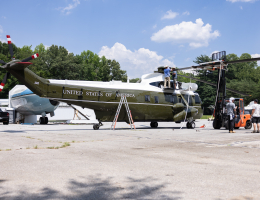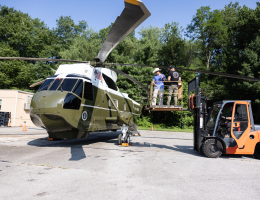The U.S. Secret Service traded in a helicopter used for decades at its James J. Rowley Training Center (RTC) for a much newer model.
The old helicopter was manufactured in October 1963 and has been used by countless special agents and Uniformed Division officers to practice protective movements in and around Marine One — the Marine Corps aircraft which transports the President.
“Our existing aircraft had seen better days. It was definitely an aging platform,” said Troy Sarria, the deputy special agent in charge of the training facility in Laurel, Maryland.
The old helicopter’s doors were corroded and often stuck. Without frequent use, the interior and several body panels had become home to a number of stinging insects and animals from the nearby woods.
Thus, training mostly was limited to working outside the aircraft. Other instructors avoided the old helicopter entirely, opting for classroom work over live training in and around the ragged chopper.
The new helicopter arrived June 24 on a flatbed trailer. The VH-3D 351 model recently was decommissioned during an extensive three-month process. The latest arrival was covered in white shrink-wrap for its journey to RTC.
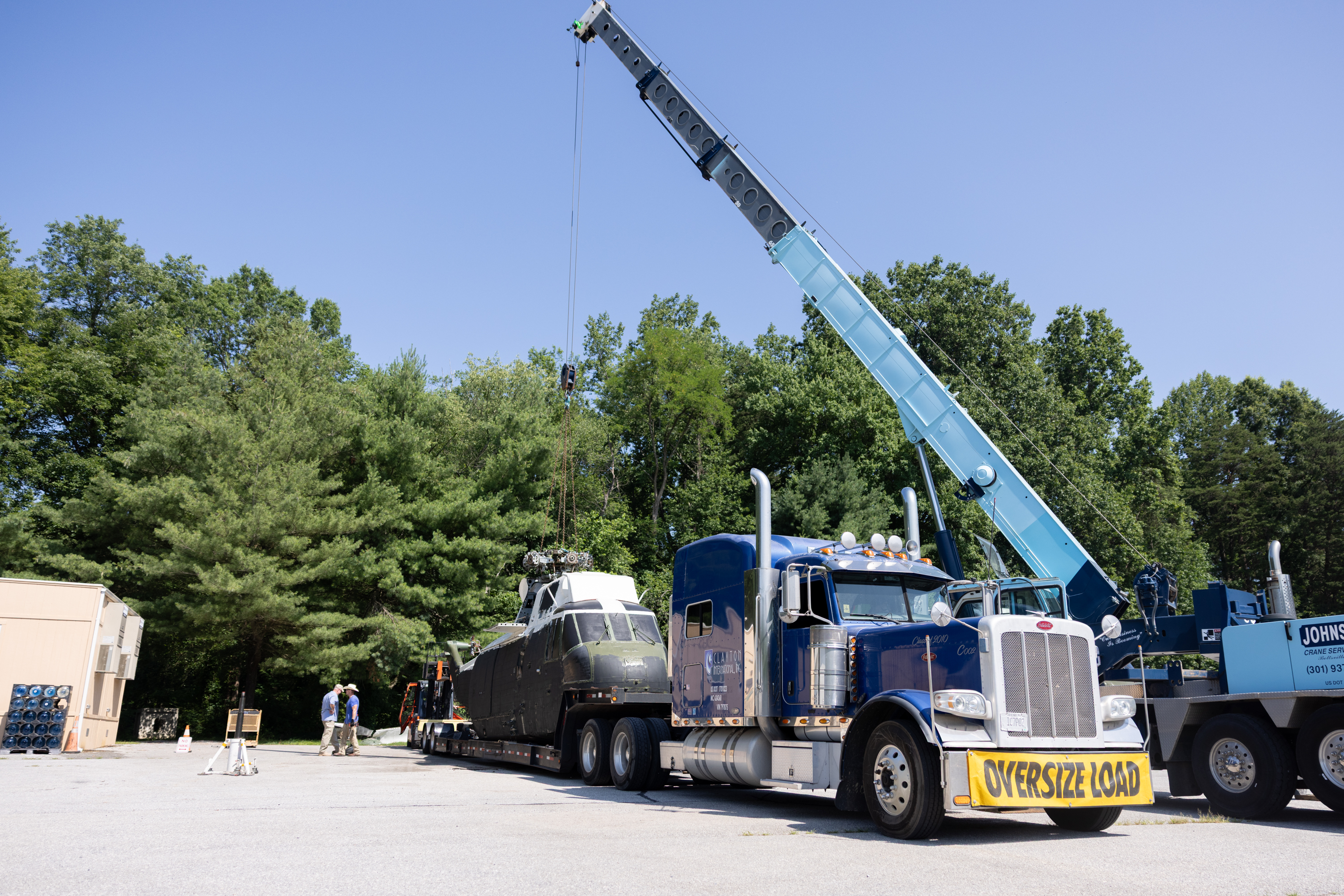
“It (the old helicopter) was just kind of dilapidated. And a question went out: ‘Could you help us, or could you come look at this to see what you think could be done to make it either look a bit more appealing or be usable as a training asset?’” said Matt Cooper, the maintenance officer for the Presidential Helicopter Support Facility.
Discussions of replacing the helicopter began nearly three years ago but failed to gain traction until a chance meeting between Deputy Chief Michael Jazwiecki of the Secret Service’s Uniformed Division and Gen. Eric Smith, the Commandant of the Marine Corps.
Jazwiecki attended a 2023 leadership discussion Smith led at the Secret Service’s headquarters and reached out to the commandant later, explaining the situation at RTC.
“The whole goal was to have an actual operational piece of equipment so that you can do real, live training,” Jazwiecki said.
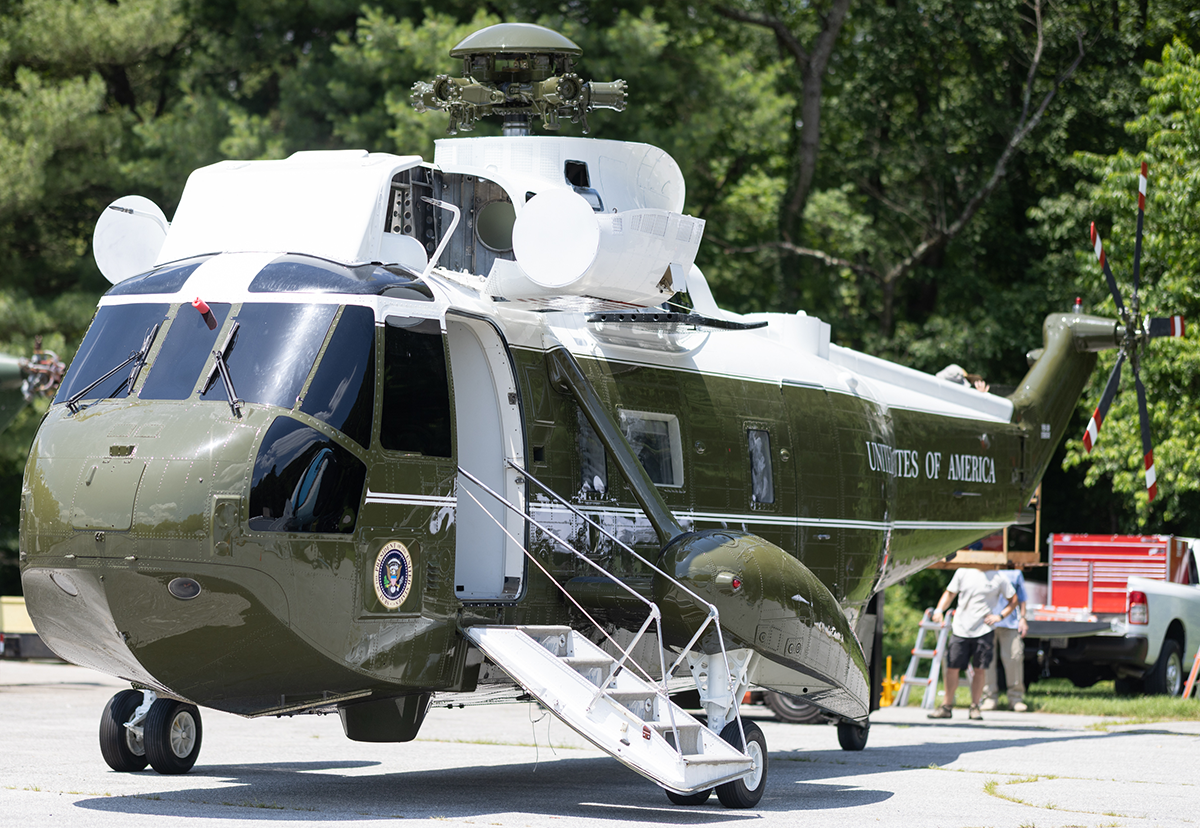
The new helicopter will do just that, allowing trainees to work both inside and outside of the mock Marine One. The seating configuration is the same as that of the president’s current VH-92 helicopter, which is the latest model.
The Secret Service also uses a mock Air Force One for training. Affectionately dubbed Air Force One Half, this front section of an aircraft is used to practice airport arrivals and the president’s descent down the stairs of the storied aircraft.
The new helicopter is intentionally placed at the nose of this training airplane, mirroring an actual arrival or departure where a protectee moves from one aircraft to another, said Sarria, who added that he expects the new helicopter will be used weekly.
“We always have some sort of protection training going on here,” he said.
As for the old helicopter, it was transported to Arizona. There, it will be shredded for recycling. The scrapped helicopter was never actually used to transport the President. Rather, this was a former Navy helicopter that had been repainted to resemble a presidential helicopter.
Visitors to RTC never seemed to mind, as mock Marine One and Air Force One Half were frequent stops on tours of the training facility. The new helicopter is expected to draw even more attention, Sarria said.
“We also use this as an exhibit piece,” he said. “We always stop by here and give them (visitors) a demonstration on how protection works at airports, since we spend so much time at airports.”
The new helicopter was a gift from the Presidential Helicopters Program Office, which also covered the cost of shipping the new chopper and hauling away the old one, said Sarria, praising Cooper and his crew for their partnership and expertise.
“To get a newly decommissioned Marine One helicopter, it goes beyond any of our imagination,” he said.

